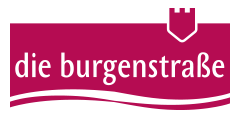Kirchberg an der Jagst
Castles and Palaces
The former Hohenlohe residence town of Kirchberg lies picturesquely above the Jagst valley. The upper town, the "Städtle", is dominated by the town tower, which towers above the scenery like an oversized pencil, the town church and the largest castle complex in Hohenlohe. Special attractions every year are the town fair with the medieval market at the end of February, the book market in June, the Castle Garden Festival in July and the Christmas market on the second weekend in Advent. The cultural.... [More about Kirchberg an der Jagst]

Kirchberg Castle on Jagst.

Kirchberg Castle on Jagst.

Kirchberg Castle on Jagst - Prince's little house.

Kirchberg Castle on Jagst - Inner courtyard.

View from Sofienberg to castle Kirchberg/ Jagst.

Kirchberg Castle on Jagst.
Schloss Kirchberg
Kirchberg Castle
Kirchberg Castle is the seat of the “House of Peasants” Foundation which is linked to the Schwäbisch Hall Farmers' Association. They have developed the ensemble of historic buildings from feudal times into a trans-regional educational establishment and meeting place. Its main focus is on the Academy of Organic Agriculture and Food Industry. International conferences hosting experts from all over the world and the cooperation with partners from universities, organic farming associations and the Slow Food movement have turned the Kirchberg "Peasants’ Castle" into a multiplication centre for sustainable rural agriculture and healthy eating.
The building complex also accommodates a castle hotel which boasts 23 attractive rooms with magnificent views, as well as a castle café and an Ice-Cream Factory. Exhibitions and events that are organized by an artist group based in the castle add to the cultural life.
The castle buildings are grouped around three courtyards. The original castle complex, whose origin goes back to 1240, was transformed into a four-wing Renaissance castle under Count Ludwig Kasimir of Hohenlohe from 1590 to 1597. After the family was elevated to the rank of a principality under Carl August of Hohenlohe, as of 1783 the building complex was converted into the largest Baroque residence in the Hohenlohe region according to the plans of Leopoldo Retti, the Ansbach court architect. After the Hohenlohe-Kirchberg dynasty had died out in 1861, the castle complex became the property of Öhringen in 1861; it served as a museum until 1945 and as an old people's home and nursing home until 2009.
Today the interiors of the castle are found in Neuenstein Castle. The castle park dates from the late 18th century. It is located west of the castle and is accessible at all times. Visitors can enjoy garden stone sculptures as well as a rare example of a garden house with decorative landscape paintings. More about the history
Schloss Kirchberg
Stiftung Haus der Bauern, Ulrike Gabert
Schlossstraße 16/3
74592 Kirchberg an der Jagst
Telefon +49 (0) 7954 921547-0
ulrike.gabert@hdb-stiftung.com
www.hdb-stiftung.com
Hofgarten und Orangerie
The baroque court garden has a special feature: it was not built directly next to the palace, as is usual elsewhere. This was not possible due to the cramped spatial conditions resulting from the castle's location on a mountain spur. It was therefore relocated to the former suburb and connected to the castle via the “Neuer Weg”.
The bell-shaped green area includes two water basins and the orangery with south-facing windows. As a typical example of baroque garden architecture, it was built in 1749/50 according to a plan by the court painter Johann Valentin Tischbein. After extensive renovation in 1983, it is now used as a space for exhibitions.
After decades in slumber, extensive preparatory studies and finally the revitalization measures from 2021-2023, the Sophienberg landscape garden, a creation of Prince Christian Friedrich Karl zu Hohenlohe-Kirchberg from the 18th century, can be experienced again in its original beauty since September 2023.
Hofgarten und Orangerie
Poststraße 21
74592 Kirchberg an der Jagst
kirchberg-jagst.de










